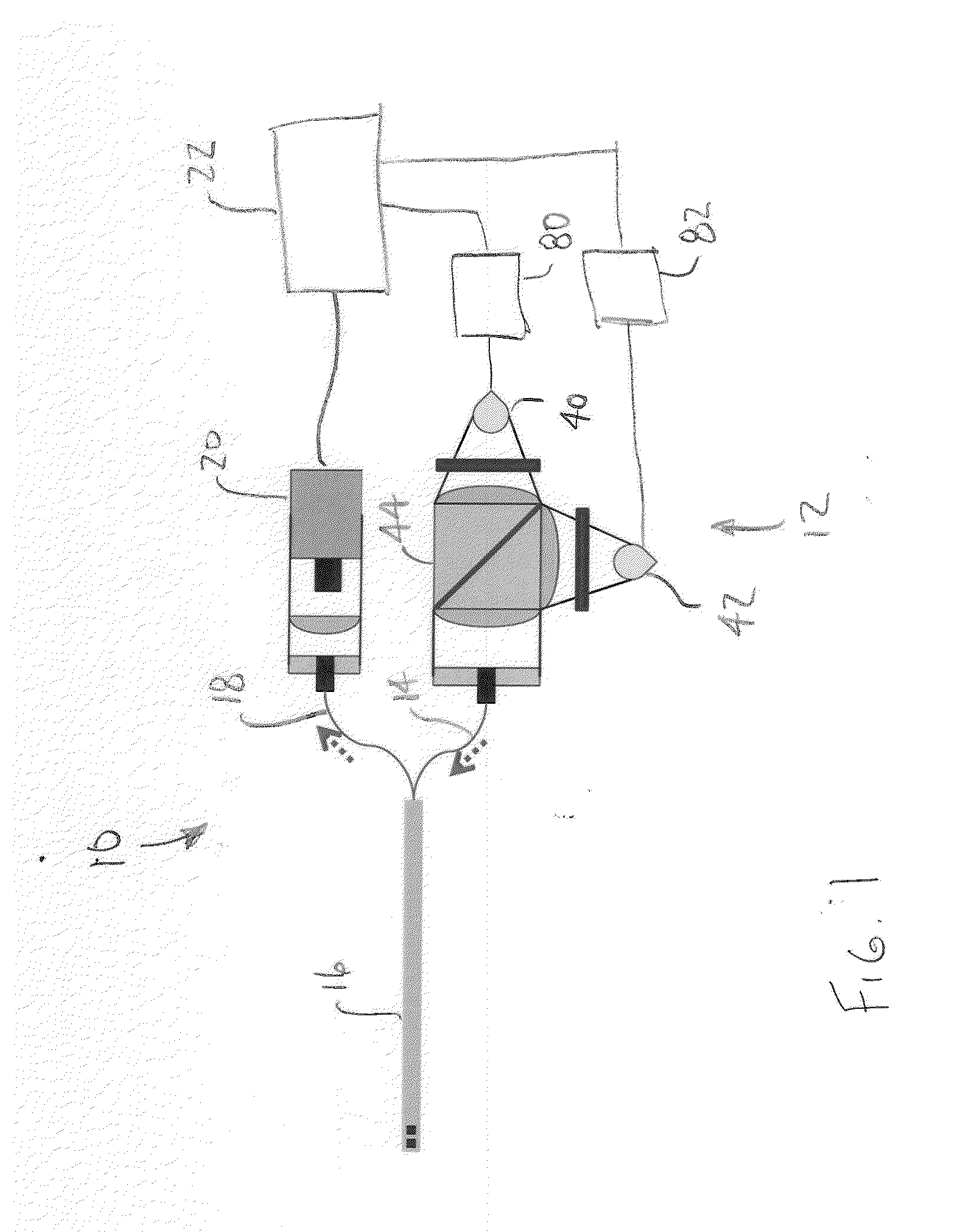EGR distribution and fluctuation probe based on co2 measurements
a co2 measurement and distribution technology, applied in the direction of material analysis, optical radiation measurement, instruments, etc., can solve the problems of increasing engine emissions, limiting the performance of the other cylinder, reducing the efficiency of the engine, so as to achieve the effect of increasing the development barrier, simple and cost-effective, and reducing the number of cylinders
- Summary
- Abstract
- Description
- Claims
- Application Information
AI Technical Summary
Benefits of technology
Problems solved by technology
Method used
Image
Examples
Embodiment Construction
Overview
[0048]A diagnostic system in accordance with an embodiment of the present invention is shown in FIG. 1 and generally designated 10. The diagnostic system 10 of this embodiment permits accurate measurement of CO2 concentrations, and potentially other substances, within a fluid stream using absorption spectroscopy. The diagnostic system 10 generally includes a light source 12, a pitch optical cable 14, an EGR probe 16, a catch optical cable 18, a detector 20 and a processor 22 for determining CO2 concentration based on the output of the detector 20. The light source 12 may be a mid-infrared (MIR) light source having a signal source 40 and a reference source 42 that are combined into a single light beam. In use, the reference source 42 is used to normalize the measurements from the signal source 40. The EGR probe 16 of this embodiment is a single-port probe capable of being installed in a single opening, such as in an aperture in an intake manifold I or an exhaust manifold (not...
PUM
| Property | Measurement | Unit |
|---|---|---|
| frequencies | aaaaa | aaaaa |
| frequencies | aaaaa | aaaaa |
| modulation frequencies | aaaaa | aaaaa |
Abstract
Description
Claims
Application Information
 Login to View More
Login to View More - R&D
- Intellectual Property
- Life Sciences
- Materials
- Tech Scout
- Unparalleled Data Quality
- Higher Quality Content
- 60% Fewer Hallucinations
Browse by: Latest US Patents, China's latest patents, Technical Efficacy Thesaurus, Application Domain, Technology Topic, Popular Technical Reports.
© 2025 PatSnap. All rights reserved.Legal|Privacy policy|Modern Slavery Act Transparency Statement|Sitemap|About US| Contact US: help@patsnap.com



